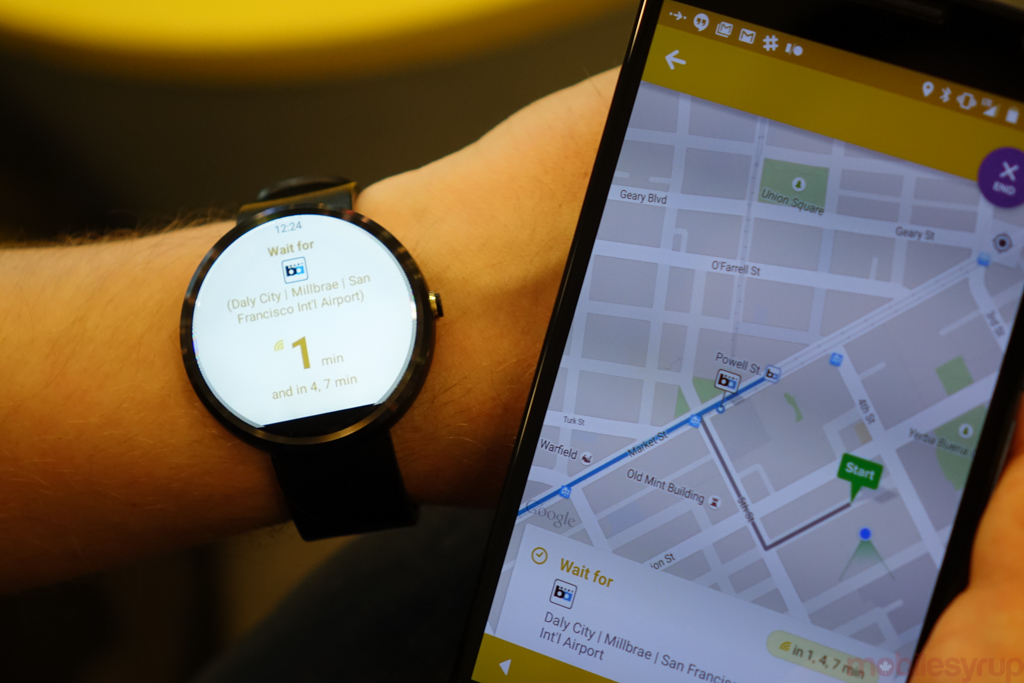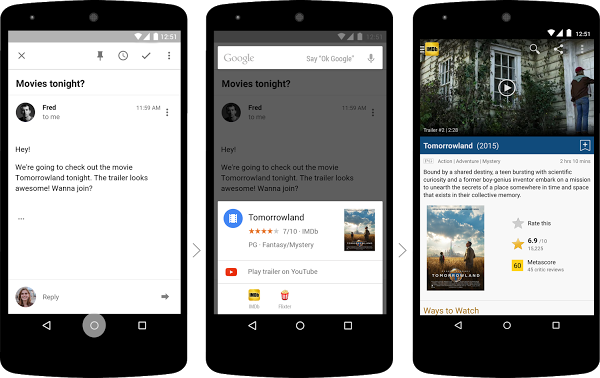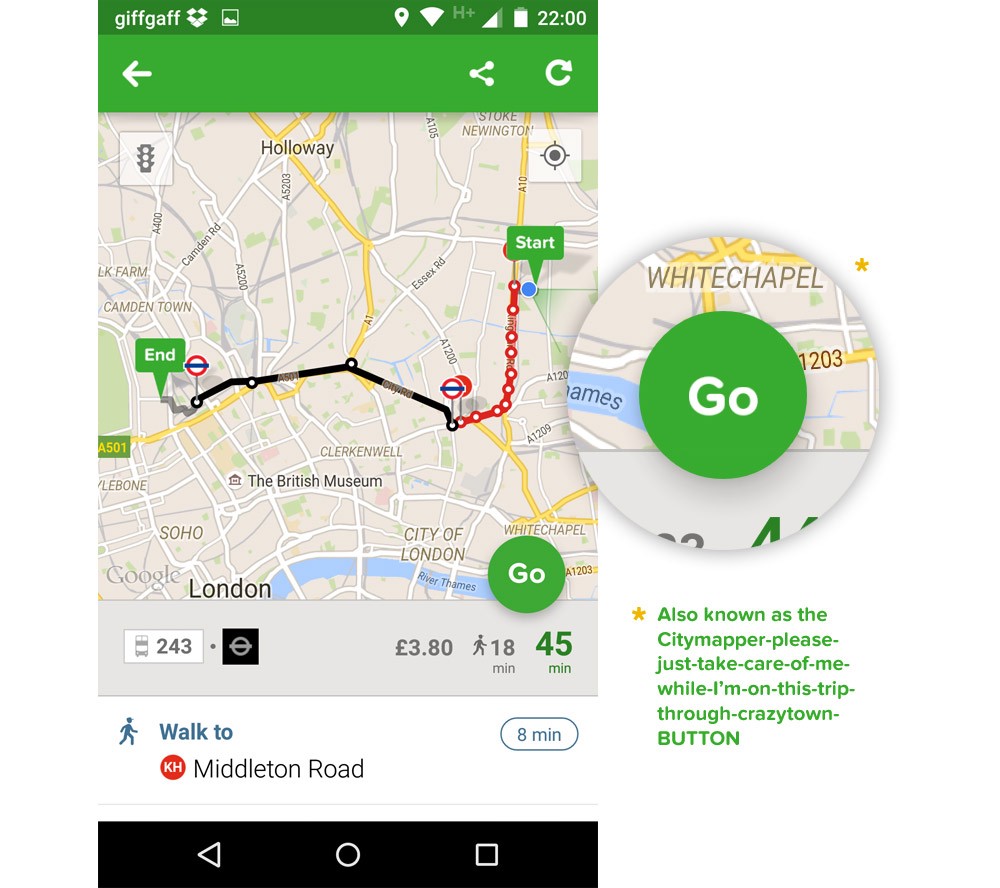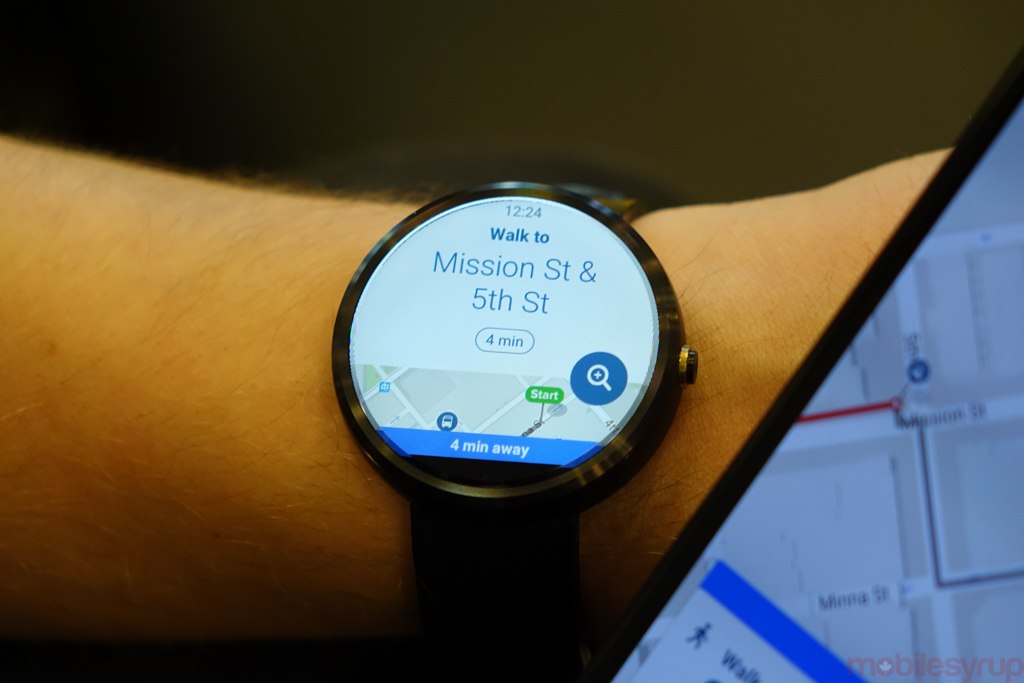
I’m walking down a long street on a sunny San Francisco afternoon, the wind howling at my back. I’m a bit lost, but not really. I know the street name, Valencia, and generally how far I need to walk to get to something that resembles a landmark. I’ve been walking for a couple of hours – meandering, really – and now I need to find a subway to return to the Moscone Center so I can grab my bags and return to Canada. It’s been a long week.

Throughout this walk, I’ve been digesting the things that Google announced this week, how they meld together to become a melange of convenience, of context. If you use an Android phone today, Google knows a lot about you: search terms (“Best chocolate in San Francisco”); location (that chocolate store); preferences (70% dark, if you please); and how you got there (Powell to 16th St. Mission, left onto Valencia and down to 18th). Apple and Microsoft may know these things, too, but Google is the only company that can distil it into a number of practical, useful cards that show up right above my flight information (on time, Gate F35), the weather in San Fran (chilly!) and at home (also chilly!).

Now on Tap, possibly the most interesting feature Google announced during I/O last week, takes that context and makes it even more immediate. By holding down on the home button inside an app, Google generally knows what you’re trying to ascertain. It knows that when you’re looking up directions to a clothing store in the Mission, you may also want to know about nearby chocolate shops (seriously, this one was amazing). It knows that if your friend sends you the name of a restaurant, you may want its address, menu and Zagat reviews, and perhaps a list of your emails in which it is mentioned (because, let’s face it, Gmail’s memory is better than yours). And, ultimately, it knows that you want these things without having to think about them, because anticipatory transactions are the most satisfying.
The same is true of Android Wear’s new always-on app feature, which I demoed on the new Citymapper app, a transit solution in dozens of cities, including Toronto, Montreal and Vancouver. According to Gil Wedam, lead designer on the app, being able to provide relevant information at all times is the ultimate strength of a wearable device, and Android Wear has an edge over the competition, including Pebble and the Apple Watch, in that regard.
“Our goal is to guide you on the journey, to actually figure out where you are,” he says, which is a lot harder than it sounds. Most transit apps give you directions and hope you follow them well enough to avoid getting lost; Citymapper keeps you in the centre, and displays the relative time to your next goal based on your location.

In its latest release, Citymapper used Material Design to its fullest, adding the quintessential action — “Go” — to the Floating Action Button paradigm, which then, if you’re wearing a watch, continually sends updates to Android Wear.
The relationship is symbiotic and essential, and it is one of the few interaction models that adds more than transient value to the smartwatch wearer.

Citymapper worked with Google to fuse those interactions in a way that makes sense. One can look at the app itself, or a lockscreen notification of the next step in the journey, or an active screen on the smartwatch. But the wrist-based interaction needs to be simple. “Sometimes even a swipe is too much on the wrist,” says Wedam. “The goal was to minimize the information a user sees” so that swiping isn’t necessary.
This is the same philosophy behind Now on Tap, which is set to debut later this year with Android M. Google owns search, but it is trying to make search more contextual, more persistent within apps. Holding down the home button inside a Now on Tap-compatible Android app is sort of like a blanket “I’m Feeling Lucky” search, but narrowed to the context of the content within the immediate screen.
Google benefits greatly from this, too, mind. Now on Tap uncovers an entirely new way for its vast user base to interact with relevant search results, and those on-screen cards become yet another way to promote products, services, ads and brands. But Google is smart about the way it displays those subtle ads; Google Now has yet to sell itself to third parties, instead pushing relevant “knowledge” that can be linked externally to the company’s partners. With Google Now tapping more into the the bodies of apps, and the words and photos users access within them, it is obtaining, voluntarily, a new potential source of ad dollars, just not in the format one normally sees a banner.
Citymapper, like many of the apps being updated to support continuous computing through Android Wear, is one beautifully-designed example of how Google plays a central part in helping your now and predicting your future.
MobileSyrup may earn a commission from purchases made via our links, which helps fund the journalism we provide free on our website. These links do not influence our editorial content. Support us here.


